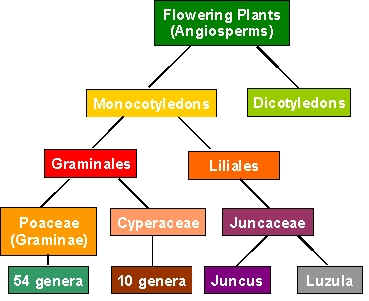| Features of the Order Graminales
- The flowers are inconspicuous, are arranged in spikelets and enclosed
in chaffey (papery) scales. They do not have petals and sepals (image of a grass flowering
head here).
- The fruit is one seeded. Its seed coat is united with the ovary wall
and is called a Caryopsis.
Grasses are in the Family Poaceae,
(also known as Gramineae), and Sedges are in the Family Cyperaceae.
The main differences are:
Grasses |
Sedges |
Cylindrical, usually hollow stems. |
Triangular, solid stems. |
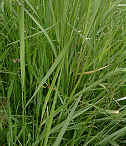 |
Alternate
leaves, in 2 ranks. |
|
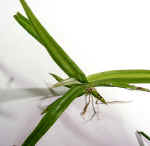 |
Leaves in 3
ranks. |
|
Flowers have
3 types of bracts. |
Flowers have a single
type of bract. |
The Rushes are in the order Liliales and
have many similar features to Lily flowers, except that the petals and sepals are small,
brown and scale-like and are called tepals. (They are called tepals
collectively, because the sepals and petals look exactly the same and are
indistinguishable from each other.) Rushes belong to the Family Juncaceae. The main
features of this family are:
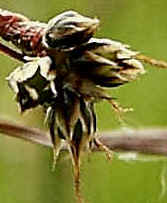
|
- Each flower is composed of 2 rings of tepals.
- Inside the perianth (the rings of tepals) are one or two rings of 3
stamens.
- In the centre is the ovary with 3 stigmas.
- The fruit is a capsule.
(General flower structure in flowering plants here) |
There are 2 genera of rushes in Britain,
(in contrast to the 54 genera of grasses).

|
Luzula (Woodrushes) which have
hairy, grass- like leaves and 3 seeded capsules (left).
Juncus (Rushes) which have hairless, cylindrical
stem-like leaves and many seeded capsules (right).
|
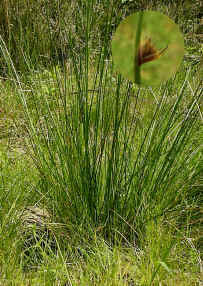 |
Continue to
Grass Structure |
